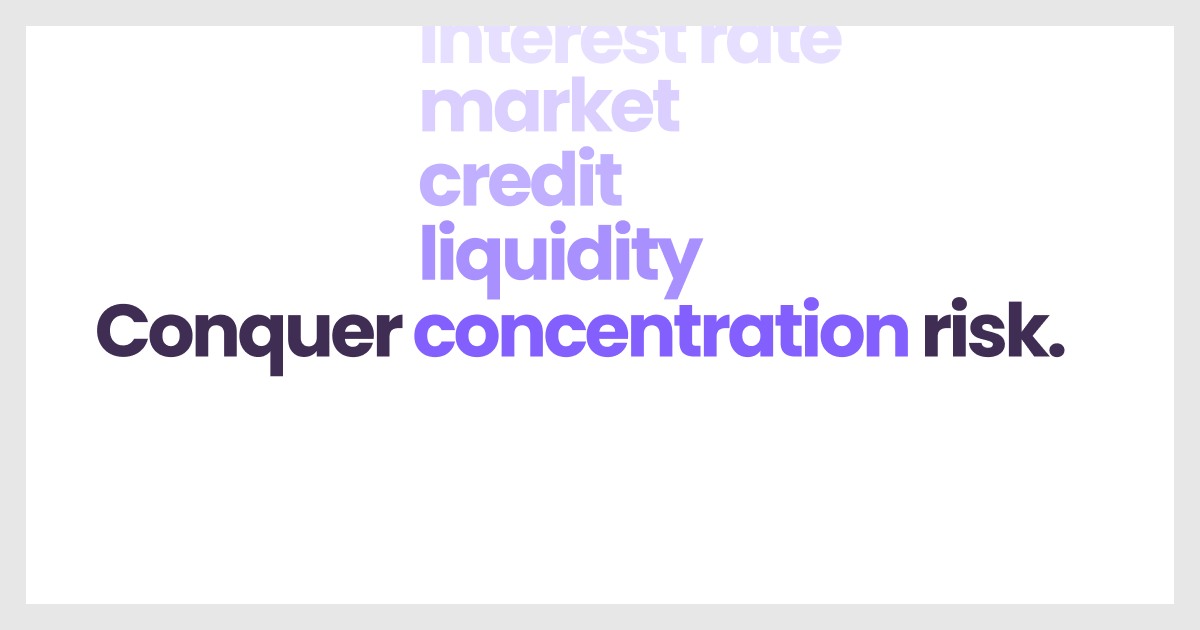Understanding and Mitigating Concentration Risk: A Guide for Credit Unions and Community Banks

As a financial institution, you deal with an array of risks daily. One that's often overlooked is concentration risk.
What is Concentration Risk?
Concentration risk refers to the potential loss resulting from an excessive accumulation of exposures towards a particular asset class, borrower, counterparty, sector, or a group of interconnected entities. It's the risk you take when your exposure is heavily "concentrated" in a particular area, creating a vulnerability to negative events in that area.
For instance, if you lend predominantly to people in the local manufacturing industry and that industry experiences a downturn, you may face significant loan defaults. Or if you invest heavily in a particular asset class, a decline in that class could have a severe impact on your balance sheet. Commercial office space is a prime example. These are examples of concentration risk.
Why Should You Avoid It?
Concentration risk is akin to, “putting all your eggs in one basket”; it exposes your institution to the volatility and unpredictability of a single sector, geography, or type of loan. A downturn or disruption in that area can lead to substantial losses.
Remember the 2008 financial crisis? It was partly due to concentration risk where banks had overexposure to the housing market through subprime mortgages and mortgage backed securities. When the bubble burst, it led to enormous losses and the collapse of some institutions.
Ways to Avoid Concentration Risk
- Diversification : This is the primary strategy to mitigate concentration risk. Diversify your loan portfolio across different industries, asset classes, and regions. If one sector is hit, the impact on the overall portfolio would be minimal.
- Regular Risk Assessment : It's important to regularly assess the concentration risk in your portfolio. Identify the areas where you are overexposed and take corrective actions. This requires robust risk management systems and procedures in place.
- Setting Exposure Limits : Set a maximum limit to the amount of exposure you are willing to take in a particular area. These limits should be proportionate to your capital base and risk tolerance.
- Stress Testing : Conduct stress tests to understand the impact of potential downturns or interest rate changes in different areas on your portfolio. This can help in designing effective risk mitigation strategies.
- External Risk Hedging : For certain types of concentration risks, risk transfer instruments such as insurance or derivatives may be used to hedge the risk.
- Portfolio Rebalancing : Since the variables that impact concentration risk are constantly changing, it is also important to have both short and long-term options. Multiple options allow you to constantly be adjusting your portfolio based on current information and goals.
A Practical Example
Let's consider a small bank that has significant exposure to the commercial real estate sector. The concentration risk would be high if this sector experiences a downturn.
The bank could mitigate this risk by diversifying its portfolio. It could consider lending to other industries, other types of loans, invest in government bonds, or even diversify geographically. Regular risk assessment can help the bank identify this overexposure. Setting exposure limits can prevent such a situation in the first place. If a downturn does occur, the impact on the bank would be much less severe due to diversified exposure.
Concentration risk is a significant threat to the financial health of credit unions and small banks. It's crucial to understand it, measure it, and take appropriate actions to mitigate it. By being proactive and strategic about managing concentration risk, your institution can navigate potential downturns more effectively and ensure its long-term sustainability.
Conclusion
Managing concentration risk is essential for the sustainability of any financial institution. It requires a proactive approach, robust risk management practices, and efficient tools.
That's where Quilo comes into play.
The essence of managing concentration risk lies not just in recognizing it but in taking prompt action to alleviate it. Quilo facilitates this by offering a prescriptive solution: syndicate fractions of loans you originate out and put those dollars to work by participating in funding fractions of different types of approved loans you want.
Take a look at how it works here
Don't let concentration risk threaten your financial institution's stability. Contact us today to book a call, and let us demonstrate how Quilo can empower your risk management strategy and foster your institution's resilience. With Quilo, turn your concentration risk into a well-calibrated, diversified, and sustainable portfolio. Remember, your journey to effective risk management is just a call away!

